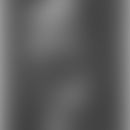Synonym(s)
HistoryThis section has been translated automatically.
DefinitionThis section has been translated automatically.
Leishmaniasis caused by Leishmania brasiliensis possibly with later spread to the mucous membranes of the upper respiratory tract (mucocutaneous form). According to the clinic a distinction is made between cutaneous and mucocutaneous form.
You might also be interested in
LocalizationThis section has been translated automatically.
ClinicThis section has been translated automatically.
Cutaneous form: Initial formation of an erythematous papule with transition to central ulceration with formation of an elevated border wall. There is often an accompanying lymphangitis.
Mucocutaneous leishmaniasis: severe form of cutaneous leishmaniasis. Spread of the parasites from the original cutaneous lesions to the mucous membrane, probably hematogenic. Thickening in the nasal and lip area (tapir nose) with destruction of the septum, possible progression to the pharynx, larynx and trachea. This form occurs in 1-3% of infected persons and tends to superinfection with other pathogens.
DiagnosisThis section has been translated automatically.
TherapyThis section has been translated automatically.
Progression/forecastThis section has been translated automatically.
Cutaneous form: Frequently spontaneous healing.
Mucocutaneous form: Chronic recurrent course, risk of sepsis, mutilations, malnutrition
Diffuse (anergic) cutaneous leishmaniasis
Case report(s)This section has been translated automatically.
- A 41-year-old patient noticed 6 weeks after a backpacking holiday in Peru a solitary red scaly 0.5 cm large papule on the right lateral lower leg, which showed clear size progression over the course of several weeks. Furthermore, a central ulceration occurred after a banal injury.
- Findings: 3.0 cm large, centrally ulcerated, brown-red, slightly pressure swollen node on the right lateral lower leg. Clear lymphadenitis of the right groin.
- Histology: Acanthotic, sometimes pseudoepitheliomatous surface epithelium with parakeratotic serum crust. Dense, diffuse, granulomatous infiltrate of neutrophil granulocytes, epithelioid histiocytes and multinucleated giant cells of varying density, lymphocytes and numerous plasma cells. Especially in the Giemsa staining of fresh forms numerous intracellularly located pathogens are found.
- Culture: Leishmania braziliensis.
- Initial treatment with miltefosine (Impavido ®, 150mg/day p.o. for 28 days) resulted in a further progression of findings. Formation of additional red nodules along the proximal lymph channels.
- Change of therapy to liposomal amphotericin B (Ambisone 2.0-3.0-mg/kg/KG) over 10 days. Below this, complete reduction of the inguinal lymph node swelling. Scarred healing of the skin lesions.
- No recurrence in the follow-up period of 1 year.
LiteratureThis section has been translated automatically.
- Eichner S et al.(2011) Disseminated cutaneous leishmaniasis. Abstract CD 46th DDG meeting: P16/17
- Vianna G (1911) Sobre uma nova especie de Leishmania. Bras Med 25: 411
Incoming links (17)
Bahia ulcer; Bauru; Boshyawa; Bosh yaws; Brazilian leishmaniasis; Chiclero ulcer; Espundia; Espundia, mucocutaneous shape; Forest yaws; Ilaga; ... Show allOutgoing links (7)
Leishmania brasiliensis; Leishmaniasis mucocutaneous; Leishmaniasis (overview); Montenegro reaction; Old world cutaneous leishmaniasis ; Papel; Ulcer of the skin (overview);Disclaimer
Please ask your physician for a reliable diagnosis. This website is only meant as a reference.




